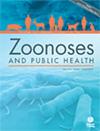Comprehensive Survey of Tick Infestations and Pathogen Detection in Taiwanese Wildlife: Uncovering Public Health Risks
Abstract
Introduction
Ticks are important vectors of zoonotic diseases, yet their biodiversity and pathogen associations remain understudied in many regions. This study aims to provide a comprehensive survey of tick species and associated pathogens in Taiwanese wildlife to assess their ecological roles and public health implications.
Methods
We conducted a nationwide survey across Taiwan and its affiliated islands, collecting ticks from wildlife hosts and their environments. Morphological and molecular techniques were used to identify tick species and detect tick-borne pathogens, focusing on Rickettsia spp., Ehrlichia spp. and Anaplasma spp. Bayesian phylogenetic analyses were performed to confirm pathogen identities and explore genetic relationships.
Results
We identified 12 tick species and 6 pathogens, including a potential novel Rickettsia species. Haemaphysalis mageshimaensis and Haemaphysalis longicornis were the most abundant, with H. longicornis recorded in Taiwan for the first time. Molecular analysis revealed widespread Rickettsia spp. infections, with detection rates reaching 100% in New Taipei City, Changhua and Yilan, and 83.33% in Lienchiang. No pathogens were detected in counties such as Yunlin, Chiayi and Tainan. Phylogenetic analysis confirmed the presence of Rickettsia tamurae , Rickettsia massiliae and Candidatus Rickettsia jingxinensis, as well as a potential novel species closely related to R. conorii subsp. raoultii.
Conclusions
This study highlights the diversity of ticks and tick-borne pathogens in Taiwanese wildlife, underscoring the importance of ongoing surveillance. The first record of H. longicornis and the identification of a novel Rickettsia species demonstrate the urgent need for research on their ecological and zoonotic impact.

 求助内容:
求助内容: 应助结果提醒方式:
应助结果提醒方式:


